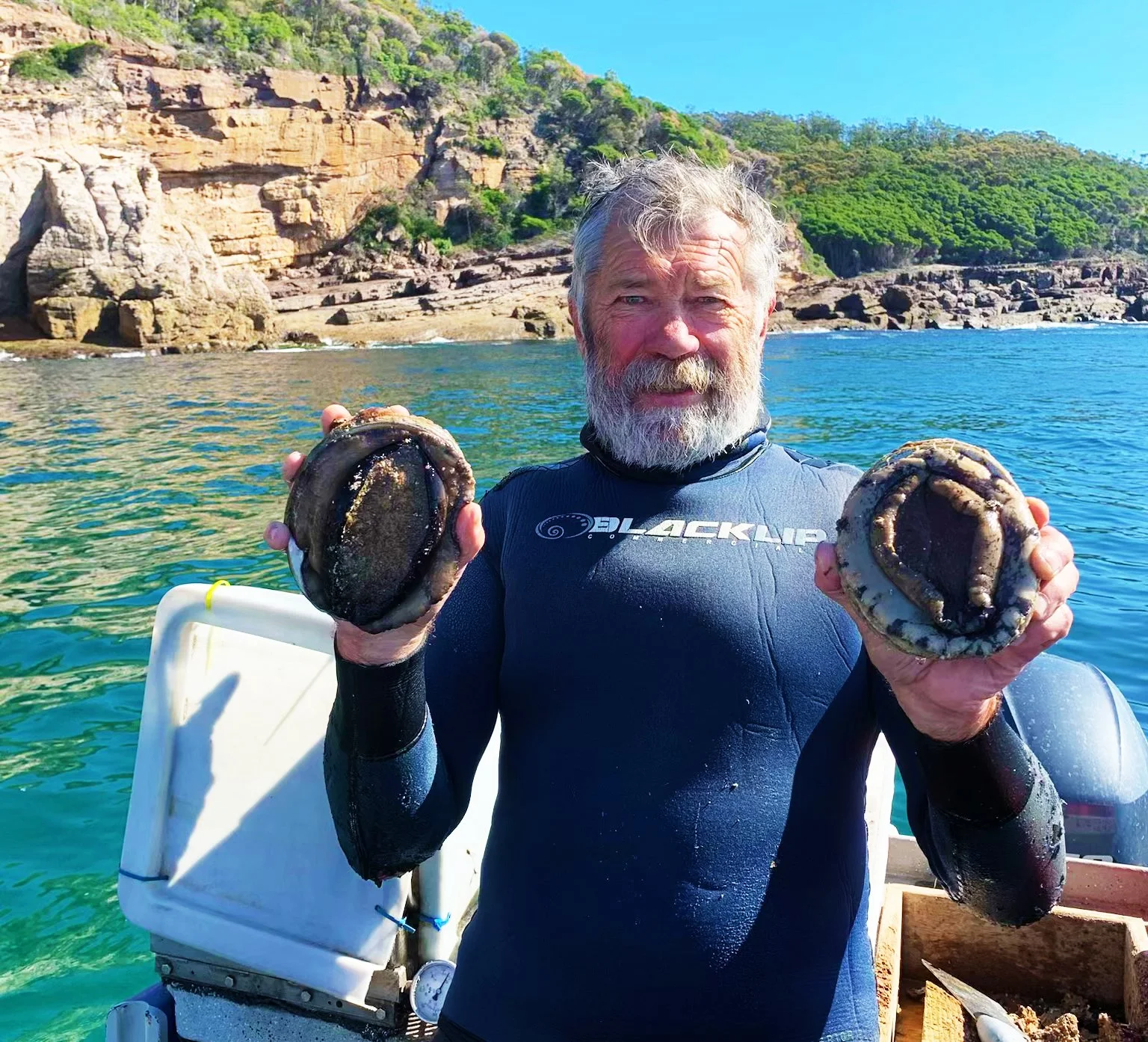The purest abalone
Abalone are one of the ocean’s quiet achievers.
Unlike oysters, which grow in neat rows on leases in the estuaries and filter nutrient-filled water to eat, abalone roam wild.
They’re single-shelled molluscs, clinging to rocky reefs and grazing slowly in search of drift weed, the long brown seaweed torn free by the big southerly storms that pound the coast in winter.
And the Sapphire Coast is perfect country for them.
“We’ve got long stands of seaweed, sandy gutters and big boulders – exactly the mix abalone need,” says Pambula diver John Smythe.
“When the storms come through, the weed gets ripped off and drifts into the gutters. The abalone grab hold and feed until it’s gone.”
The waters here are part of the Great Southern Reef, a chain of temperate ecosystems stretching from Sydney to Tasmania.
With no impact from heavy industry or sprawling cities, the water on the Sapphire Coast stays clear and clean.
It supports everything from large schools of salmon and tuna to pods of dolphins and migrating humpbacks – and healthy, abundant abalone.
Some days, the diving is pure magic: “You’re down there with dolphins and seals swimming around you, feeding blue grouper and just surrounded by fish,” John says.
“It’s a fantastic ecosystem to dive in.”
Other days bring surprises of a different kind, like the time John flattened himself against the reef as a Mako shark charged.
The black lip abalone found along the Sapphire Coast are prized worldwide, particularly across Asian markets, where they’re considered a delicacy.
They grow slowly, which makes careful management essential.
The industry has learned some hard lessons over the decades, and initiated conservation measures to preserve the stocks.
Reducing quotas, collecting scientific data and raising size limits have been introduced to ensure abalone are harvested sustainably.
For John, who has spent over five decades on these reefs, the principle is simple: “Look after the ocean and it’ll keep looking after us”.





